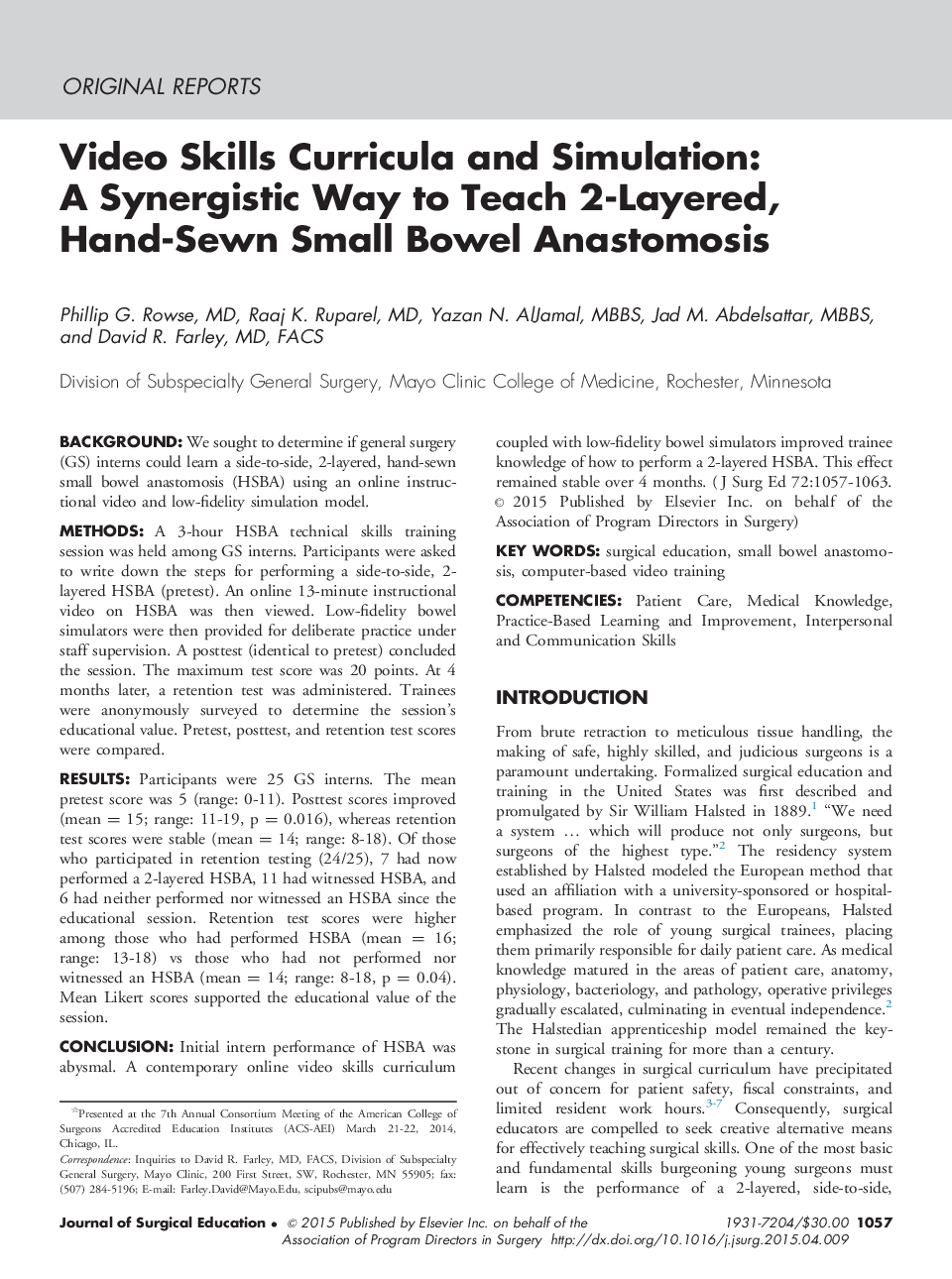| Article ID | Journal | Published Year | Pages | File Type |
|---|---|---|---|---|
| 4297585 | Journal of Surgical Education | 2015 | 7 Pages |
BackgroundWe sought to determine if general surgery (GS) interns could learn a side-to-side, 2-layered, hand-sewn small bowel anastomosis (HSBA) using an online instructional video and low-fidelity simulation model.MethodsA 3-hour HSBA technical skills training session was held among GS interns. Participants were asked to write down the steps for performing a side-to-side, 2-layered HSBA (pretest). An online 13-minute instructional video on HSBA was then viewed. Low-fidelity bowel simulators were then provided for deliberate practice under staff supervision. A posttest (identical to pretest) concluded the session. The maximum test score was 20 points. At 4 months later, a retention test was administered. Trainees were anonymously surveyed to determine the session’s educational value. Pretest, posttest, and retention test scores were compared.ResultsParticipants were 25 GS interns. The mean pretest score was 5 (range: 0-11). Posttest scores improved (mean = 15; range: 11-19, p = 0.016), whereas retention test scores were stable (mean = 14; range: 8-18). Of those who participated in retention testing (24/25), 7 had now performed a 2-layered HSBA, 11 had witnessed HSBA, and 6 had neither performed nor witnessed an HSBA since the educational session. Retention test scores were higher among those who had performed HSBA (mean = 16; range: 13-18) vs those who had not performed nor witnessed an HSBA (mean = 14; range: 8-18, p = 0.04). Mean Likert scores supported the educational value of the session.ConclusionInitial intern performance of HSBA was abysmal. A contemporary online video skills curriculum coupled with low-fidelity bowel simulators improved trainee knowledge of how to perform a 2-layered HSBA. This effect remained stable over 4 months.
